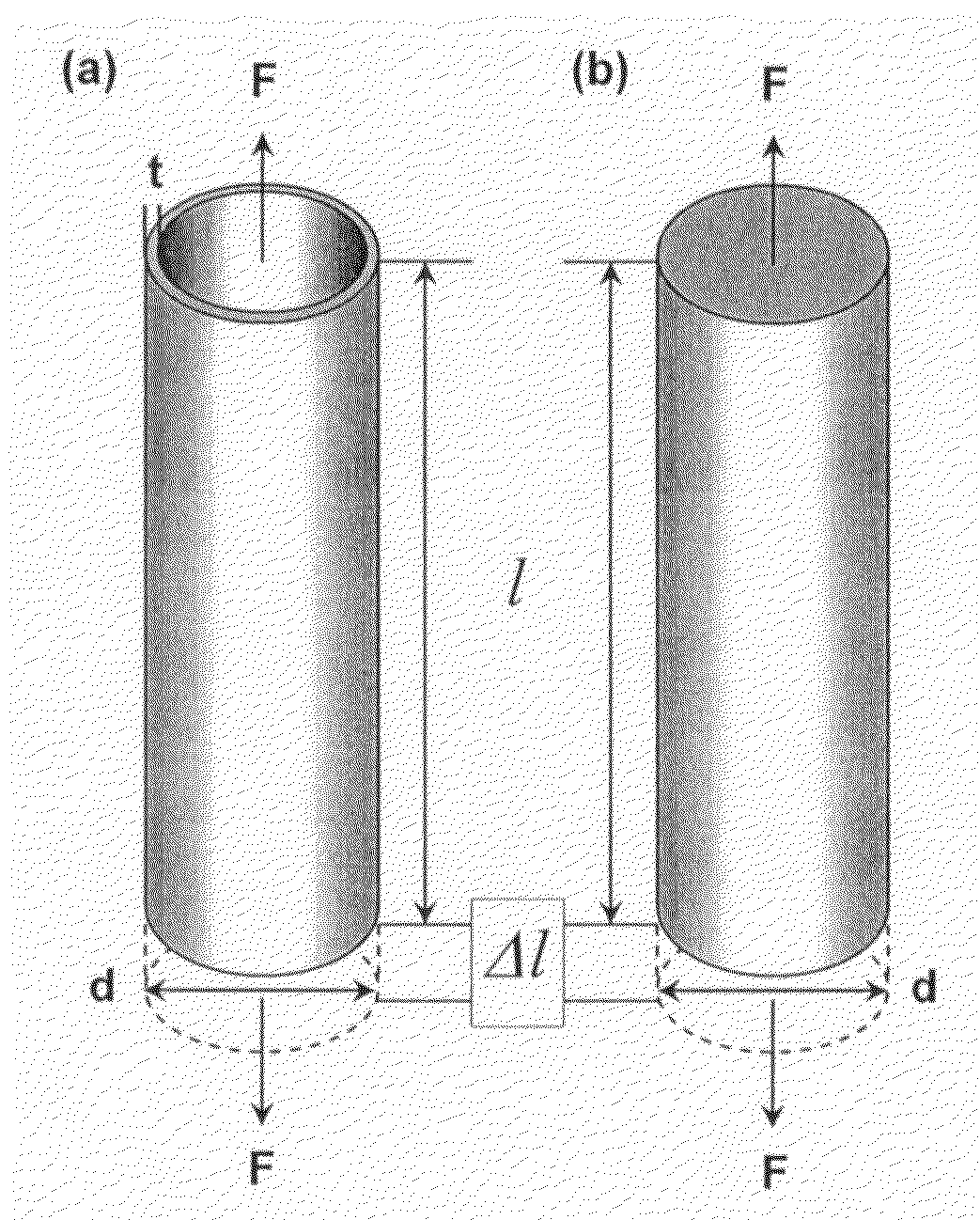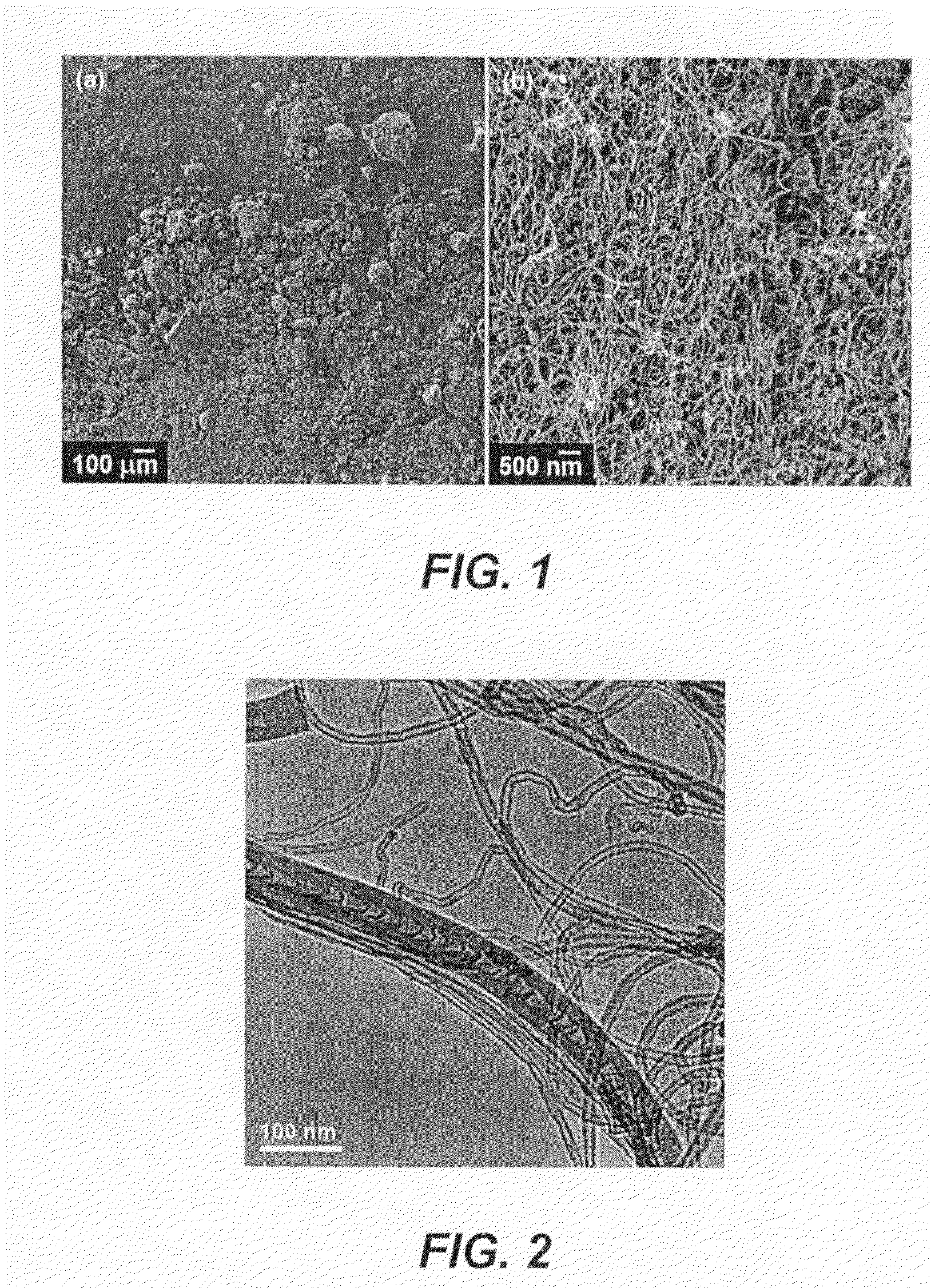Method and system for detecting damage in aligned carbon nanotube fiber composites using networks
- Summary
- Abstract
- Description
- Claims
- Application Information
AI Technical Summary
Problems solved by technology
Method used
Image
Examples
example 1
[0100]A micro-scale twin-screw extruder was used to obtain high shear mixing necessary to disentangle CVD-grown multi-walled nanotubes and to disperse them uniformly in a polystyrene thermoplastic matrix.
[0101]The polymer melt was then extruded through a rectangular die and drawn under tension before solidification. The process of extruding the nanocomposite through the die and subsequent drawing resulted in a continuous ribbon of aligned nanocomposites. These aligned nanocomposite films could be subsequently laminated using traditional composites processing techniques such as autoclave or tape placement techniques to create macro-scale aligned nanocomposites.
[0102]The structure of the films was investigated using electron microscopy and the tensile behavior characterized using a dynamic mechanical analyzer.
[0103]The micro-scale twin-screw extruder can be used to achieve dispersion of multi-walled carbon nanotubes in a thermoplastic / thermoset polymer matrix. In the present examples ...
example 2
[0106]In another embodiment, carbon nanotubes were first dispersed in a solvent and placed in a sonicator bath for mixing. The mixture was sonicated for at least 15 minutes. Under continued sonication, a polymer compatible with the solvent was slowly added to the nanotube / solvent mixture until completely dissolved. The nanotube / solvent / polymer was sonicated for at least 15 minutes until enough solvent evaporated to form a viscous mixture. The solvent was then allowed to evaporate and the remaining nanotube / polymer mixture was dried in a vacuum oven.
[0107]After drying, the nanotube / polymer solids were fed into a twin-screw extruder and the temperature, mixing rate, and mixing time were specified to obtain high shear stresses in the extruder flow. The molten polymer was then extruded through a die and drawn under tension to form a continuous ribbon of the polymer / nanotube mixture.
[0108]Resulting electron microscopy shows both dispersion of the carbon nanotubes and alignment in a prima...
example 3
[0111]To disperse CVD-grown multi-walled carbon nanotubes in a polystyrene matrix, a micro-scale twin-screw extruder (DACA Instruments—Goleta, Calif.) was used to obtain the high shear mixing necessary to disentangle and disperse the nanotubes.
[0112]To obtain tight control over the weight fraction of nanotubes within the polymer and minimize exposure to nanotubes that become airborne, 3.5 g of polystyrene (280 K Mw—Scientific Polymer, Inc) was dissolved in tetrahydrofuran (THF) and mixed with 184.2 mg of nanotube powder.
[0113]The solution was cast in a petri dish and sonicated as the solvent was evaporated. The purpose of sonication was not to enhance the nano-scale dispersion of nanotubes within the polymer but rather to assure the nanotubes were dispersed on the microscale so that they are encapsulated within the polymer after evaporation of the solvent.
[0114]After drying, the mixture of nanotubes and polymer was then fed into the extruder, which was pre-heated to 155° C., and the...
PUM
| Property | Measurement | Unit |
|---|---|---|
| Angle | aaaaa | aaaaa |
| Mass | aaaaa | aaaaa |
| Mass | aaaaa | aaaaa |
Abstract
Description
Claims
Application Information
 Login to View More
Login to View More - R&D
- Intellectual Property
- Life Sciences
- Materials
- Tech Scout
- Unparalleled Data Quality
- Higher Quality Content
- 60% Fewer Hallucinations
Browse by: Latest US Patents, China's latest patents, Technical Efficacy Thesaurus, Application Domain, Technology Topic, Popular Technical Reports.
© 2025 PatSnap. All rights reserved.Legal|Privacy policy|Modern Slavery Act Transparency Statement|Sitemap|About US| Contact US: help@patsnap.com



